|

by Richard Hoagland
from
EnterpriseMission Website
|
"If we
could discover an ocean on Europa ... unbelievable!"
Dan Goldin
NASA Administrator, 1995 |
Shortly after the first NASA unmanned Voyager mission to Jupiter, in
March, 1979, Richard C. Hoagland published in Star & Sky magazine a
radical new theory -- regarding implications stemming from Voyager's
historic fly-by and data return from one of the "Galilean moons":
Europa.
Hoagland proposed that a planet-wide ocean still exists under the
tens-of-miles-thick sulphur-tinged ice now completely covering
Europa. Further, that in that extremely ancient ocean -- the only
other planetary "near-by" liquid water that may have persisted from
the beginnings of the solar system (other than on Earth).
Life may have once
originated ... an alien type of life that -- because of the
present uniqueness of Europa in the entire solar system --
currently might still exist ...
At the time, Hoagland's
theory encountered overwhelming opposition from almost everyone at
NASA, official and/or scientist ... except for two significant
exceptions:
-
inventor of the
communications satellite, famed science and science fiction
writer ("2001: A Space Odyssey"), Arthur C. Clark
-
Dr. Robert
Jastrow -- one of the founders of NASA, and former
Director of its Goddard Institute for Space Studies
Based on Hoagland's
startling theory, Clark two years later would create a sequel to his
most famous work ("2010: Odyssey Two" -- after long claiming that
such a follow-on was "impossible"). This would then be followed by a
movie sequel (co-written and directed by Peter Hyams) of the same
name.
In the acknowledgments to "2010," Clark would write:
"The fascinating
idea that there might be life on Europa, beneath ice-covered
oceans kept liquid by the same Jovian tidal forces that heat Io,
was first proposed by Richard C. Hoagland in the magazine Star &
Sky ( The Europa Enigma,' January, 1980). This quite brilliant
concept has been taken seriously by a number of astronomers
(notably NASA's Institute of Space Studies, Dr. Robert Jastrow),
and may provide one of the best motives for the projected
GALILEO Mission..."
NASA's long-awaited
unmanned GALILEO follow-on to Voyager -- consisting of a separable
instrumented "probe" (designed to actually plummet into the huge Jovian atmosphere and report back its findings), and a much
longer-lived "orbiter" loaded with cameras and other sensors (for
close-up surveys of the planet and its unique space environment,
including the "Galilean moons") -- finally reached Jupiter on
December 7, 1995.
The probe successfully
streaked into Jupiter's crushing atmosphere that afternoon, sending
back 54 minutes of invaluable data as it fell ... before the rising
temperatures and pressures silenced it forever; meanwhile, the
Orbiter successfully fired its own retrorockets -- becoming the
second manmade object to be forever captured by the giant planet
Jupiter.
In a few short months, after completing its first elongated swing
around the largest of known planets, the Orbiter portion of the
GALILEO spacecraft will have an opportunity to turn its wide variety
of sensors for the first time on Europa -- only one of the many
Jupiter "Galilean moon" encounters planned for the next two-years.
And, in an astonishing reversal of their previous opinions, NASA's
entire Galileo team (if not all of NASA itself) is now on record as
"eagerly awaiting confirmation of the existence of Europa's
planet-wide, ice-covered ocean via GALILEO information" -- if not
what may lurk below ...
Included in this vocal outpouring of "new Europa interest" is NASA's
present Administrator, Dan Goldin (see above).
At the University of Washington (Seattle), a team of oceanographers
is even now busily creating (for an official NASA mission proposal)
a full-scale, unmanned robotic expedition to Europa -- to follow
GALILEO. The idea: to remotely explore Europa's oceans from the
Earth ... to actively seek out "the new life forms" that Hoagland
first proposed, and Arthur Clarke then made seem so real.
Remarkable, totally unacknowledged amid all this new interest in "Europa"--
by either NASA, the GALILEO scientists, or the busy oceanographers
at the University of Washington -- is the originator of this
remarkable idea, himself ...
Here, then, is Hoagland's original, unedited, highly controversial
1980 STAR & SKY "Europa Proposal" -- even as an official
NASA
mission, 16 years after it was written -- clandestinely explores its
implications.
In order to offer genuine authenticity of this document, these are
scanned images of the actual article.
|
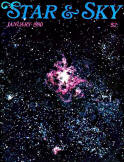
Cover of
Star & Sky Magazine, Jan. 1980 |
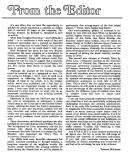
Forward from
the Editor
. |
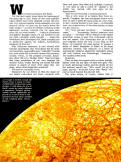
Left Title
Page of Article
.
|

Right Title
Page
. |
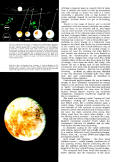
Page 18 of
Magazine
. |
|
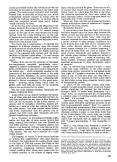
Page 19 of
Magazine |
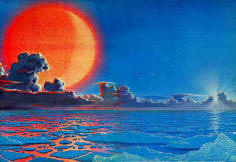
Illustration
Page |
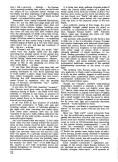
Page 22 of
Magazine |
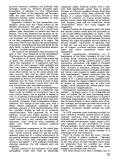
Page 23 of
Magazine |

Page 24 of
Magazine |
|

Illustration
Page
. |
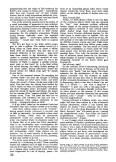
Page 26 of
Magazine
. |
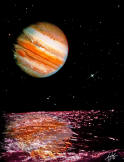
Illustration
Page (A Hoagland Orignal) |
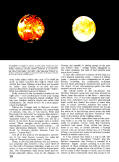
Page 28 of
Magazine
. |
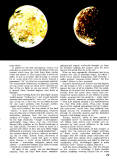
Page 29 of
Magazine
.
|
|

Page 30 of
Magazine |
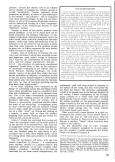
Page 31 of
Magazine |
|

















